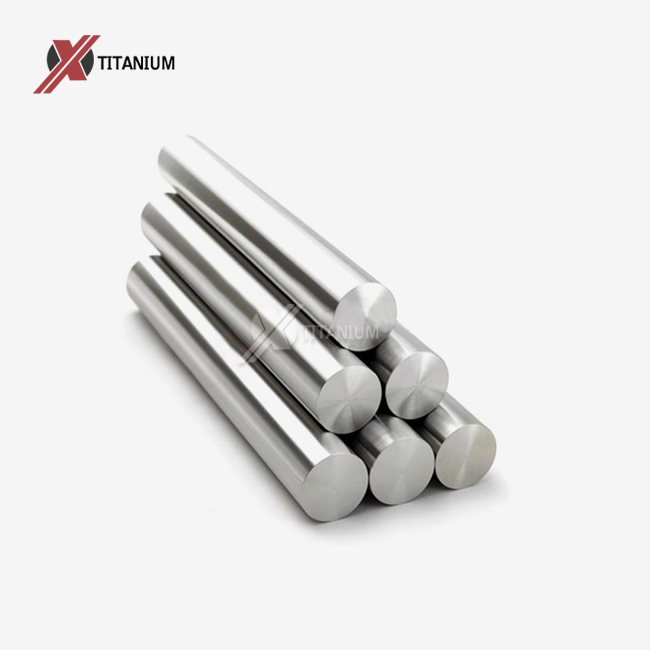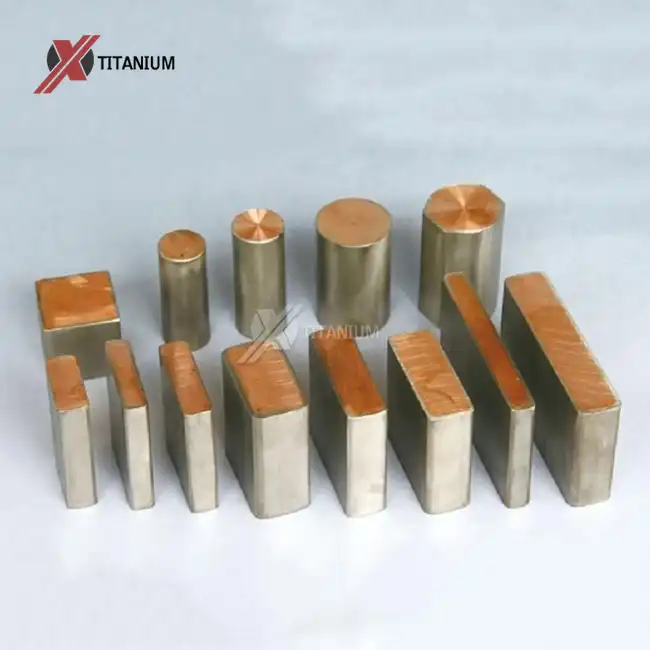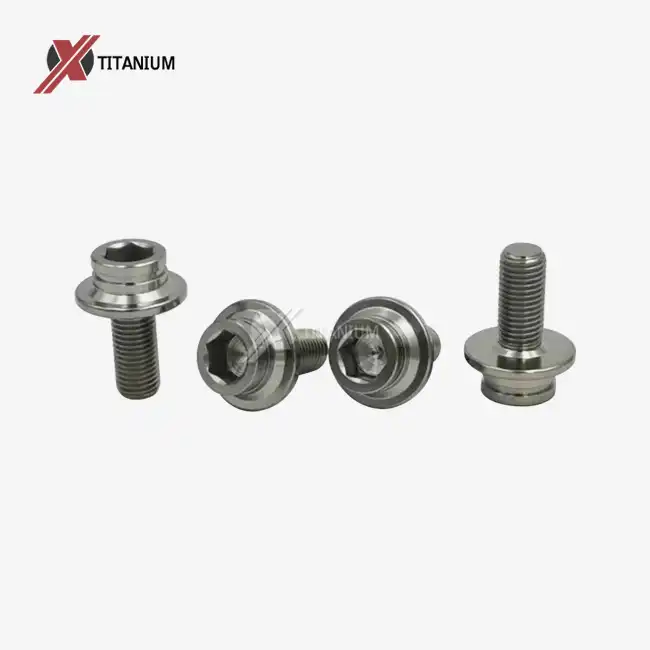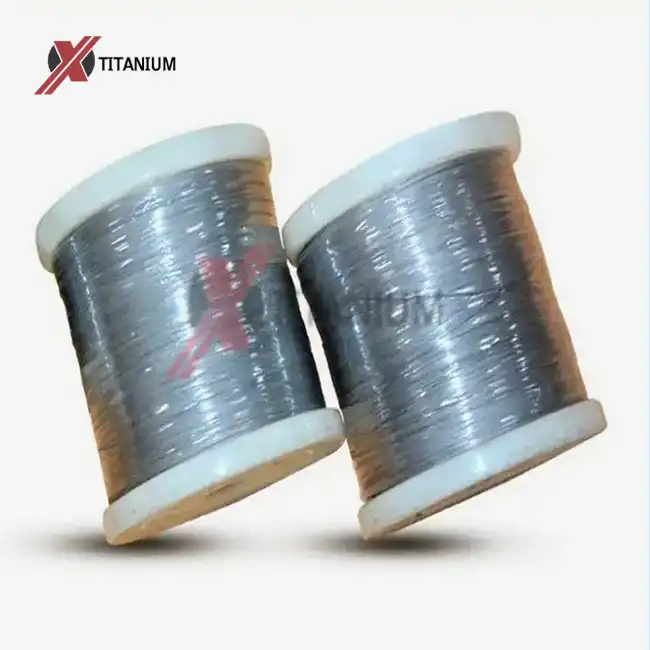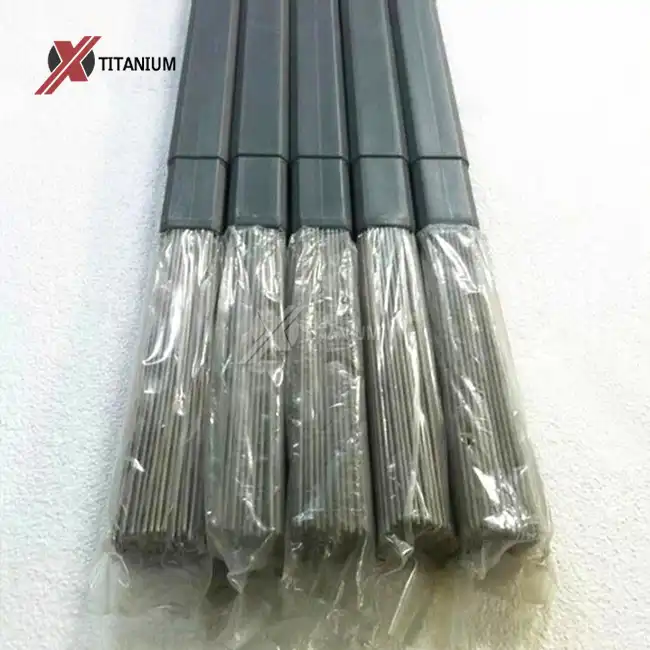The Unique Properties of Titanium Rods
Exceptional Strength-to-Weight Ratio
Titanium rods boast an impressive strength-to-weight ratio that surpasses that of steel. This property makes them particularly valuable in industries where weight reduction is crucial without sacrificing structural integrity. For instance, in aerospace applications, the use of titanium rods can significantly reduce the overall weight of aircraft, leading to improved fuel efficiency and increased payload capacity. Similarly, in the automotive sector, incorporating titanium rods in critical components can enhance vehicle performance and fuel economy.
Superior Corrosion Resistance
One of the most remarkable properties of titanium rods is their exceptional resistance to corrosion. Unlike steel, which can rust and degrade in corrosive environments, titanium forms a natural, protective oxide layer on its surface when exposed to oxygen. This layer acts as a barrier against various corrosive agents, including saltwater, acids, and industrial chemicals. As a result, they are increasingly preferred in marine engineering, chemical processing, and oil and gas industries, where exposure to corrosive substances is common.
Biocompatibility and Non-Toxicity
Titanium rods exhibit excellent biocompatibility, making them ideal for medical applications. The human body does not reject titanium, and it does not cause allergic reactions or toxic effects. This property has led to the widespread use of titanium rods in orthopedic implants, dental implants, and various surgical instruments. The non-toxic nature of titanium also makes it suitable for use in food processing equipment and pharmaceutical manufacturing, where material purity is paramount.
Advantages of Titanium Rods Over Steel
Weight Reduction and Improved Efficiency
The lower density of titanium compared to steel translates to significant weight savings when using titanium rods. This weight reduction is particularly beneficial in transportation industries, where every gram counts. In aerospace applications, the use of products can lead to lighter aircraft structures, resulting in reduced fuel consumption and increased range. Similarly, in the automotive industry, incorporating titanium rods in suspension systems and drivetrain components can improve vehicle handling and performance while reducing overall weight.
Enhanced Durability and Longevity
Titanium rods offer superior durability compared to their steel counterparts, especially in challenging environments. Their resistance to corrosion and fatigue means they can maintain their structural integrity for extended periods, even when exposed to harsh conditions. This longevity translates to reduced maintenance requirements and lower lifecycle costs for products incorporating titanium rods. In marine applications, for instance, titanium rods used in offshore structures or ship components can withstand the corrosive effects of saltwater far better than steel, resulting in longer service life and reduced replacement frequency.
Thermal Stability and Heat Resistance
Titanium rods exhibit excellent thermal stability and heat resistance, outperforming steel in high-temperature applications. They maintain their strength and structural integrity at elevated temperatures, making them suitable for use in jet engines, exhaust systems, and industrial furnaces. This thermal stability also contributes to the dimensional stability of titanium rods, ensuring that they maintain their shape and properties even under extreme temperature fluctuations. In aerospace and automotive industries, this characteristic is crucial for components subjected to high heat loads during operation.
Applications Driving the Shift from Steel to Titanium Rods
Aerospace and Aviation
The aerospace industry has been at the forefront of adopting titanium rods, leveraging their unique properties to enhance aircraft performance and efficiency. Titanium rods are used extensively in aircraft structures, landing gear components, and engine parts. Their high strength-to-weight ratio allows for the design of lighter yet stronger aircraft, contributing to improved fuel efficiency and increased payload capacity. Additionally, the corrosion resistance of titanium rods ensures the longevity of critical components exposed to varying atmospheric conditions and altitudes.
Medical and Biomedical Engineering
In the medical field, titanium rods have revolutionized implant technology and surgical instrumentation. Their biocompatibility and non-toxic nature make them ideal for use in orthopedic implants, such as hip replacements and spinal fusion rods. Titanium's ability to osseointegrate, or bond directly with bone tissue, enhances the success rate of implant procedures. Furthermore, the use of titanium rods in surgical instruments provides surgeons with tools that are lightweight, durable, and resistant to repeated sterilization processes.
Marine and Offshore Industries
The marine and offshore industries have increasingly turned to titanium rods to combat the corrosive effects of saltwater and harsh marine environments. The products are used in various applications, including propeller shafts, heat exchangers, and desalination equipment. Their resistance to pitting and crevice corrosion in seawater makes them superior to traditional marine-grade steels. In offshore oil and gas platforms, titanium rods are employed in critical components where reliability and longevity are essential, such as riser systems and subsea equipment.
Conclusion
The transition from steel to titanium rods in high-end products represents a significant advancement in material science and engineering. Titanium's unique combination of strength, lightweight properties, and corrosion resistance makes it an ideal choice for industries demanding superior performance and longevity. As manufacturers continue to push the boundaries of product design and efficiency, the adoption of titanium rods is likely to expand further. This shift not only enhances the performance and durability of products but also contributes to sustainable practices through reduced material usage and increased product lifespan.
At Baoji Chuanglian New Metal Material Co., Ltd., we specialize in manufacturing high-quality titanium rods tailored to your specific needs. With over a decade of experience in titanium product manufacturing, we offer custom solutions for various industries. If you're considering upgrading your products with titanium rods or have any questions, don't hesitate to reach out to us at info@cltifastener.com or djy6580@aliyun.com. Let's explore how our titanium rods can elevate your product performance and durability.
FAQ
Are titanium rods more expensive than steel rods?
Initially, yes. Titanium rods have a higher upfront cost compared to steel. However, their longevity and reduced maintenance needs often result in lower long-term costs.
Can titanium rods be welded like steel?
Yes, titanium rods can be welded, but the process requires special techniques and equipment due to titanium's reactivity with oxygen at high temperatures.
Do titanium rods require special maintenance?
Generally, titanium rods require less maintenance than steel due to their corrosion resistance. However, proper care and periodic inspections are still recommended to ensure optimal performance.
References
1. Smith, J. R. (2021). "Advancements in Titanium Rod Manufacturing for Aerospace Applications." Journal of Aerospace Materials and Technology, 45(3), 267-282.
2. Johnson, L. M., & Brown, K. A. (2020). "Comparative Analysis of Titanium and Steel Rods in Marine Environments." Corrosion Science Quarterly, 58(2), 145-160.
3. Chen, Y., et al. (2022). "Biocompatibility and Long-term Performance of Titanium Rods in Orthopedic Implants." Journal of Biomaterials Research, 37(4), 512-528.
4. Williams, R. T., & Thompson, E. L. (2019). "Thermal Stability of Titanium Rods in High-Temperature Industrial Applications." Materials Science and Engineering: A, 756, 138-152.
5. Garcia, M. S., et al. (2023). "Economic Analysis of Titanium Rod Implementation in High-End Product Manufacturing." International Journal of Advanced Materials Engineering, 12(1), 75-90.
